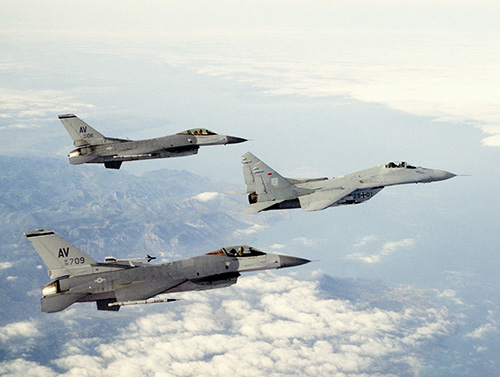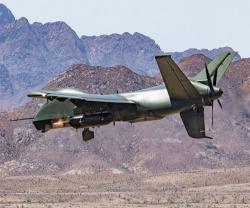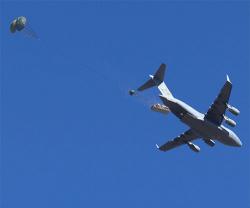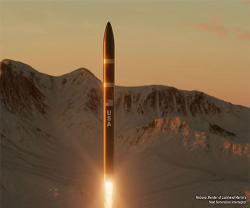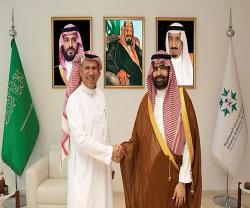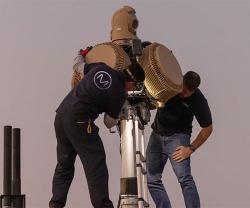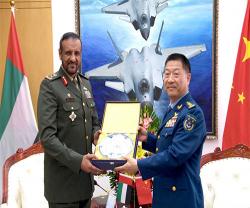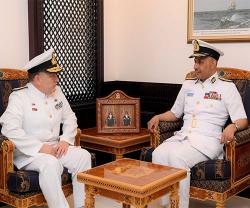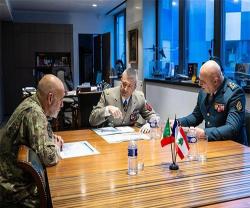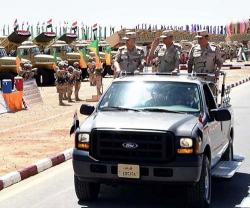Air Force Secretary Heather Wilson on Monday called for growing the Air Force from its current size of 312 operational squadrons to 386 by 2030, as it prepares for a possible conflict against a major nation such as China or Russia, Air Force Times reported.
This 24% increase in squadrons is the centerpiece of the service’s “Air Force We Need” proposal, which has been in the works for six months. This proposal seeks to lay out what it would take for the Air Force to fight a peer adversary and win, as well as defend the homeland, provide a credible nuclear deterrent, counter a medium-sized rogue nation that might try to take advantage of the Air Force’s focus on the major adversary, and fight violent extremists such as the Taliban and the Islamic State.
This follows the National Defense Strategy that the Pentagon unveiled earlier this year, which is structured around the need to shift away from the violent extremist fight and instead focus on deterring or fighting nations with significant, well-developed militaries.
In her keynote address at the Air Force Association’s Air, Space, Cyber Conference, Wilson referenced the massive Russian military exercises launched last week, involving more than 300,000 of their troops, and China’s unveiling of its first aircraft carrier and its ongoing militarization of islands in the South China Sea to extend its long-range bombers’ reach.
The additional squadrons would require a significant increase in total force manpower, including Guard, Reserve and civilians. Air Force Spokeswoman Ann Stefanek said “the Air Force now has about 670,000 active duty, Guard and Reserve airmen and civilians. By the end of the next five-year cycle in fiscal 2023, that should grow to about 685,000”.
“Adding the 74 new squadrons, if the entire request is approved, would require 40,000 more airmen and civilians in all. Meaning by the time the projected squadron growth is completed in 2030, the Air Force could grow to about 725,000,” she said.
Lt. Gen. Brian Kelly, the new Deputy Chief of Staff for Manpower, Personnel and Services, said the Air Force has not yet decided on the “mix” of new airmen, such as where they would serve, that would be added as part of that growth. But he stressed the airmen needed for the new squadrons will not be taken from existing squadrons. “It’s not a trade,” he added.
In addition to the additional Command, control, intelligence, surveillance and reconnaissance, or C2ISR, squadrons would see the biggest growth, increasing from 40 squadrons to 62 between 2025 and 2030, Wilson said. Tanker squadrons, which Wilson said is facing one of the biggest shortfalls, would also see significant growth under this plan, increasing from 40 to 54 squadrons.
The Air Force would add seven fighter squadrons to its current tally of 55, she said. And combat search-and-rescue squadrons would grow by one-third, from 27 to 36.
Bomber squadrons would grow from nine to 14, space squadrons would grow from 16 to 23, special operations squadrons would grow from 20 to 27, airlift squadrons would grow from 53 to 54 and remotely piloted aircraft squadrons would grow from 25 to 27.
Cyber and missile squadrons would remain unchanged at 18 and 9, respectively, but require modernization, Wilson said.
A 24% growth in squadrons would require a massive hike of the Air Force’s budget, which in fiscal year 2019 amounts to about $49.9 billion, pointed out Todd Harrison, a defense budget analyst for the Center for Strategic and International Studies.
“The cost of pay and benefits for 40,000 airmen is about $5.2 billion per year (give or take),” he wrote in a Tweet on Friday. “Right now the Air Force spends about $53B per year on aircraft operations, training, and recruiting. Increasing the number of squadrons by ~24% would probably add another $13 billion per year in these operating costs.”
This new structure will also mean a sea change in how the Air Force deploys its airmen, Goldfein said in an interview with Air Force Times.

